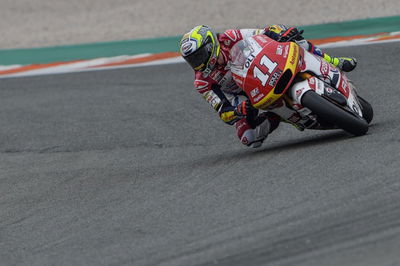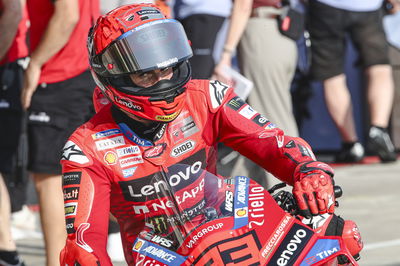MotoGP electronics: 'Understanding bigger than engine controls'
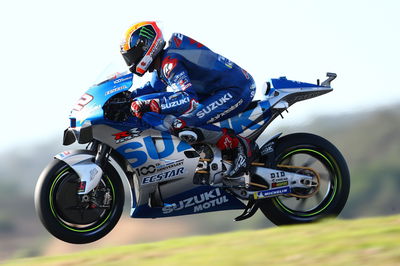
The detailed picture electronics provide in terms of what is happening inside a MotoGP bike now provides 'an even bigger contribution' than the more famous electronic roles of traction control and anti-wheelie.
That's the view of Alex Rins' crew chief Jose Manuel Cazeaux, who worked as a Ducati electronic engineer for the likes of Alex Barros, Nicky Hayden and Cal Crutchlow before joining Suzuki in 2015.
"There has been a big evolution," Cazeaux explained. "When I first started going to races, at 6-7pm you had time to go to the kart track or to play football!
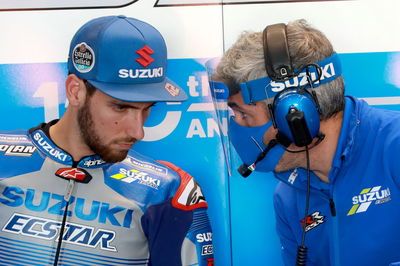
"It was an easier job because, for example, the bike would come in and there was one mechanic with a piece of paper taking notes for the tyre pressures for each session. Then the crew chief would decide which pressures to start the race.
"Now you have, for both front and rear tyres; inner air pressure, inner air temperature, internal carcass temperatures with IR technology, external surface temperatures…. You have a lot of channels and you need time and people to analyse all this.
"So electronics have evolved a lot, not only to control the bike, which people tend to think at first – like traction control or anti-wheelie – but also to understand what is happening in the bike.
"I think this is an even bigger contribution than the engine control part.
"For engineers, the electronics allow us to understand what is happening inside the bike and to create models and analyse, for example, if you need a stiffer chassis or a less stiff chassis."
With the standard MotoGP ECU only allowing teams to make calibration changes (numbers stored in data tables) rather than alter the fundamental way the electronic controls work, Cazeaux expects the sensor side will continue to grow in importance.
"Now with the limitations of the regulations, which don't allow us to change the logics of the [ECU], in some way we are limited on how the ECU controls the engine. This has an immediate impact in power delivery, traction control and anti-wheelie basically," said the Argentine.
"In the following years, this will not evolve much. It is true that we have the calibrations to do and every year we are improving a little bit. But on the other hand, sensors that you can put in the bike are unlimited, so this is an area of constant evolution."
If data gathered by the myriad of sensors is the most accurate basis for bike development, trying to copy something new on a rival machine is probably the least accurate. That's because it's one thing to see what has changed, another to know why it's been changed.
"It is important to look at the other factories, to try to assess your level relative to the other manufacturers. The problem is that it's not easy to know what they are doing [from the outside], " 'Manu' said. "You can have pictures, some journalist technical analysis, but in the end you don’t pay much attention...
"The tendency more from the Italian or European side of the team is if you see Yamaha came out with a dynamic holeshot, for example, then everybody gets a little bit crazy, 'oh, we have to make the dynamic holeshot'. But the Japanese part of our team doesn't get very nervous! They don’t care much about what the others are doing, they are following their own way.
"Of course, there are some things like the start device where you can prove you gain two tenths on the 0-100 time. So this you have to do as well, or you will stay behind.
"So we try to pay attention to the others, but it's also difficult to know exactly what everyone is doing."
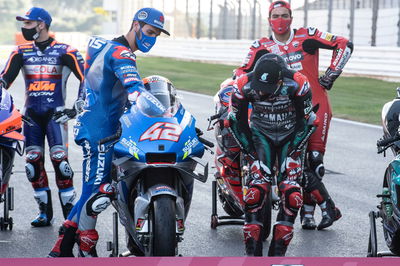
Cazeaux, who made the step to crew chief with MotoGP rookie Maverick Vinales in 2015, also gave the following anecdote in response to comments that the GSX-RR – which won the 2020 title with Rins' team-mate Joan Mir - is perhaps the 'simplest' bike on the MotoGP grid.
"When I moved to Suzuki in November 2014, two mechanics that are still part of my side of the garage did the same move," he said. "It was the Sunday after the Valencia race, so you are busy, meeting everybody, and these two guys at a certain point, around 7-8pm, were sat on the floor looking at the bike.
"Half an hour later they were still looking at everything. Two hours they were still like this. So finally I asked, 'what are you looking at?' They said, 'unbelievable, everything is in the right place'.
"They were positively surprised that everything was in the right place and quite simple. I think the bike is like this, a simple bike but technologically pushed to the limit.
"There is a lot of engineering on the bike but philosophically the simplest solution, from our experience, offers the best performance."
After helping Vinales to the GSX-RR's first victory at Silverstone 2016, Cazeaux has celebrated three MotoGP wins with Alex Rins, who finished third in last year's world championship.
